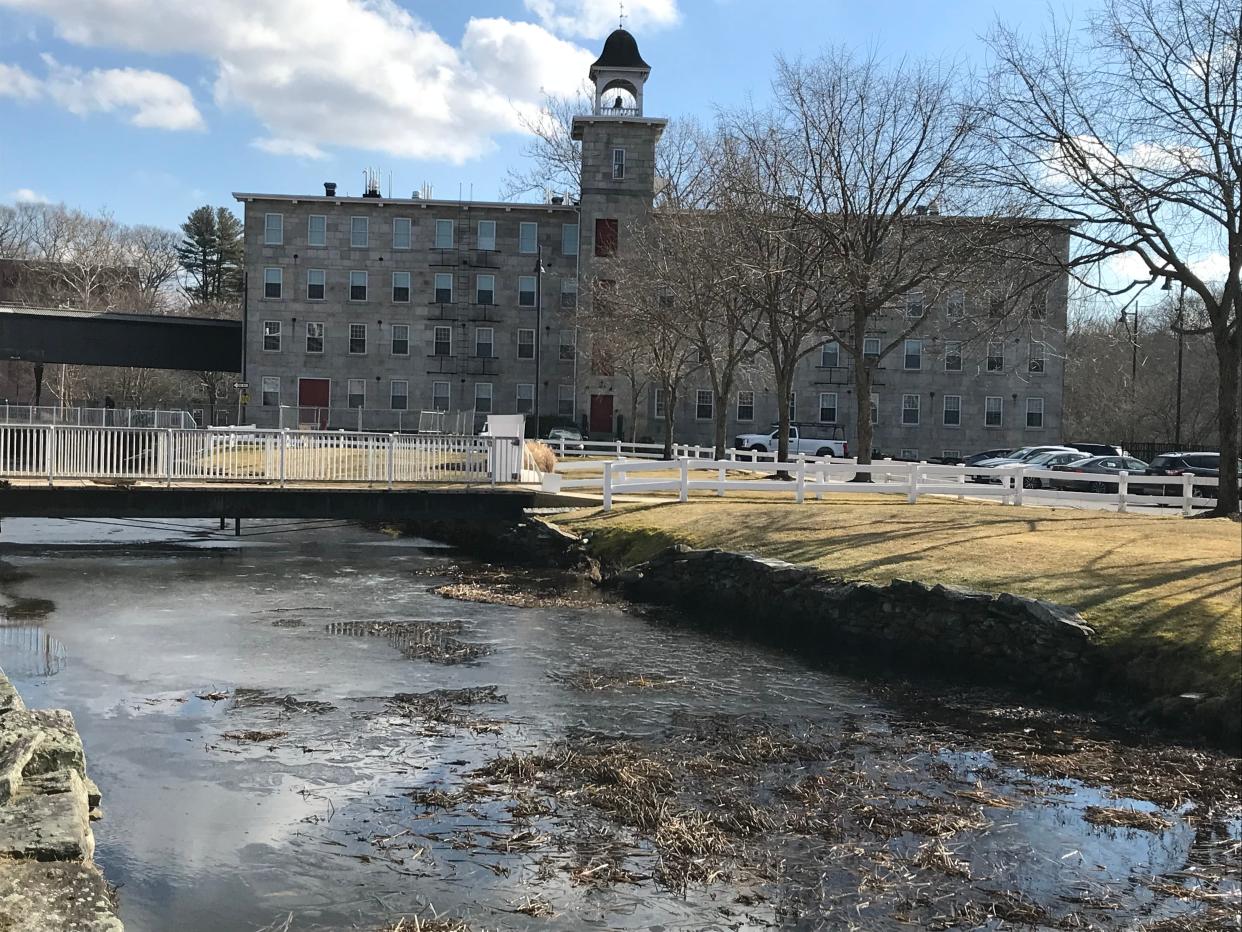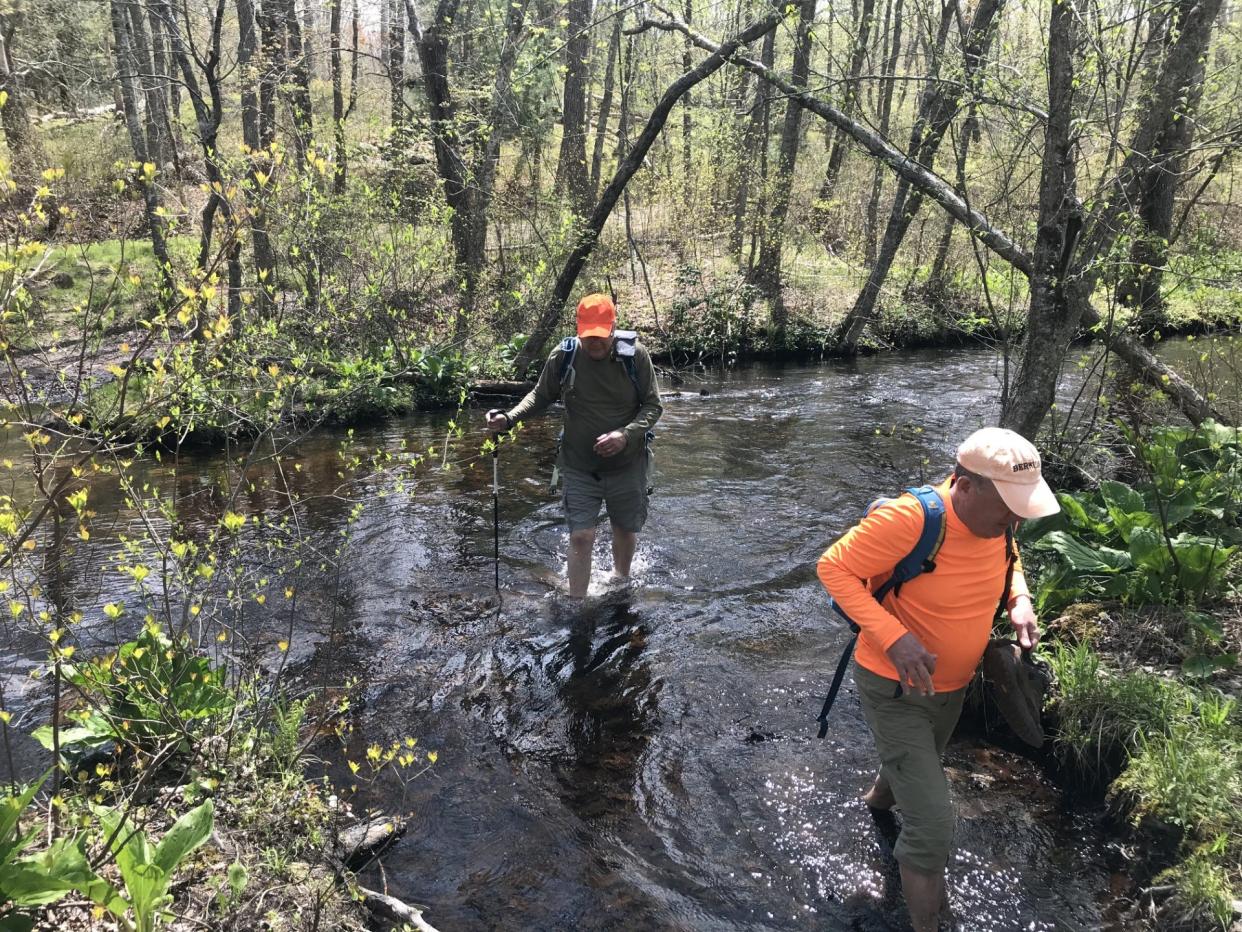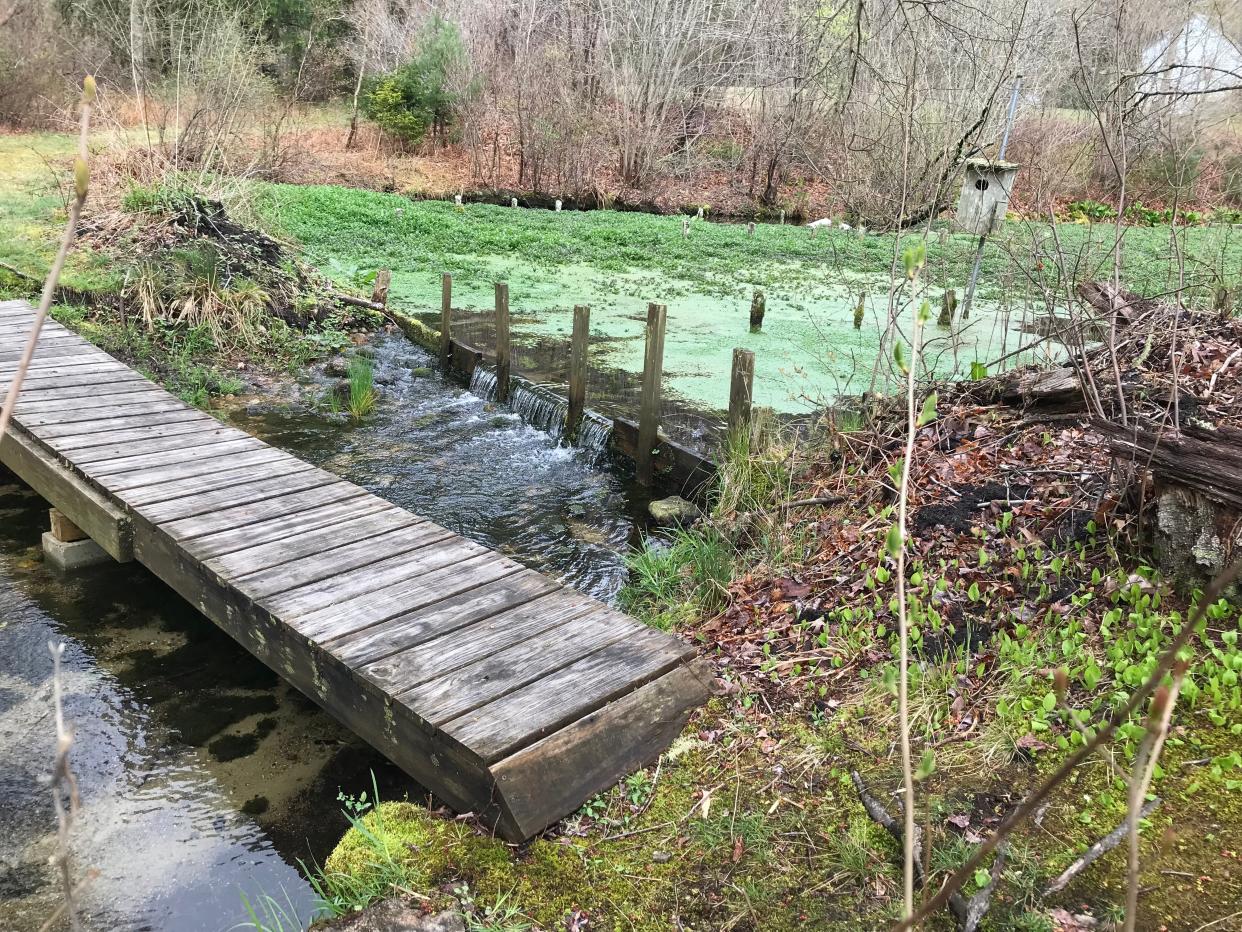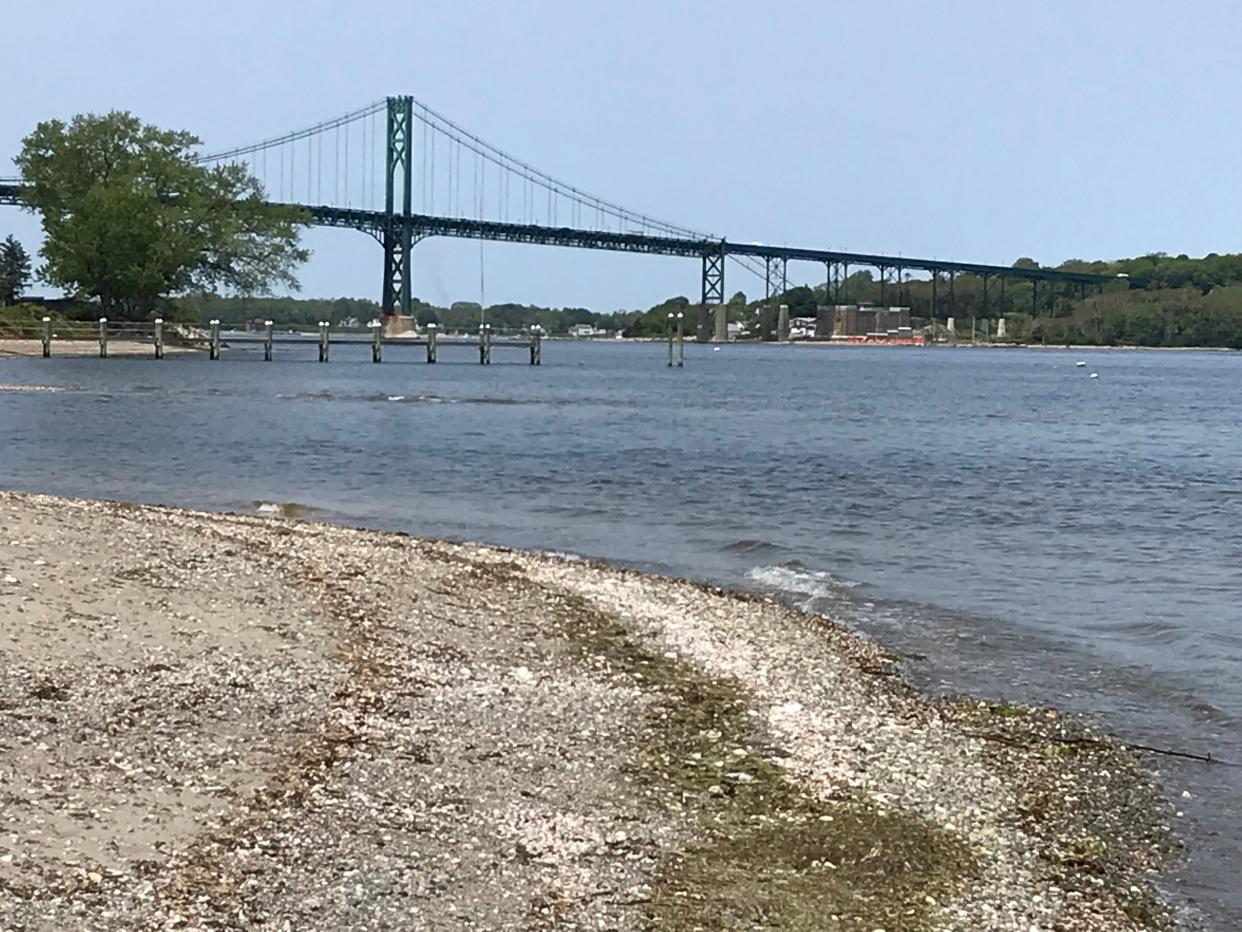Happy trails: Walking RI's most-read hiking columns of 2023
Walking Rhode Island columnist John Kostrzewa has logged a lot of miles this year, from Westerly to Portsmouth, chronicling his hikes in state parks, nature preserves and lesser-known trails that hold hidden delights.
Along the way, he's explored the relics of old farmsteads, mill villages and historical cemeteries where generations of Rhode Islanders were laid to rest, often on the same land where they'd eked out a living. And he's enjoyed the restful silence of forests, shorelines and rivers teeming with wildlife.
Come along as we revisit some of his most-read columns of the year. And if you're hungry for more, pick up a copy of his new book, "Walking Rhode Island: 40 Hikes for Nature and History Lovers with Pictures, GPS Coordinates and Trail Maps," taken from his pieces in The Providence Journal.
Here are some of John's greatest hits of 2023:
Stroll through industrial history in Slatersville, America's first planned mill village

NORTH SMITHFIELD – At one point along its 10-mile course, the Branch River tumbles over a 300-foot-long dam and drops 20 feet in a crashing roar of whitewater. The wall of water sparkles in the bright sunlight on a clear, cold winter morning.
There’s an equally impressive sight just downriver, where a complex network of canals, underground channels, raceways, trenches, sluice gates, bridges, dams, roads and stone-walled buildings line the waterway.
It was all built to create Slatersville — the first planned mill village in America. Read more to find out what's left of this relic of the Industrial Revolution.
Read more:Stroll through industrial history in Slatersville, America's first planned mill village
NY philanthropist willed his 1,800-acre estate to RI in 1937 as a sanctuary

RICHMOND – Theakston de Coppet made his name, and a fortune, by trading stocks and bonds on Wall Street.
But he also was an early conservationist who left a legacy in Rhode Island.
After spending summers in Narragansett in the late 1800s, de Coppet retired in 1916 and bought more than 1,800 acres, including a Civil War-era mill village, in the Hillsdale section of Richmond. He lived there, became president of the town council and loved to walk the land.
When he died in 1937, he stipulated in his will that after the last of his heirs and life tenants on the property passed away, his estate would transfer to the state as a “forest reservation and sanctuary."
How much of de Coppet's dream has endured? Find out on this hike through pastures and forests, historic cemeteries, rushing rivers and a trail that was once a stagecoach route.
Read more: NY philanthropist willed his 1,800-acre estate to RI in 1937 as a sanctuary
Hike near the Charlestown hatchery that once helped stock trout across Northeast

CHARLESTOWN – The clear, cold water bubbled up from deep, underwater springs near Cross Mill Pond at the right temperature to raise rainbow trout. It was the perfect spot to build a hatchery – and an industry.
The fish were sold to stock ponds throughout the region for decades – until 1995, when the hatchery’s private owner threatened to sell the land to a Japanese buyer. At the 11th hour, however, conservationists acquired the property, and volunteers have cut and spruced up trails to and around the hatchery to create the 80-acre Mill Pond Preserve.
A visit to this unique preserve will be more than just a pleasant walk; it will teach you about a unique aspect of the state's history.
Read more:Hike near the Charlestown hatchery that once helped stock trout across Northeast.
Up for a challenge? Tippecansett South Trail is a rigorous, rewarding workout
HOPKINTON – The hiking trails on the western edge of Rhode Island follow some of the same footpaths walked by the Narragansetts and other tribes to reach hunting and fishing grounds, trade routes, ceremonial sites and villages.
I recently hiked one of those trails, called Tippecansett South, and enjoyed the natural setting that included dark tunnels of mountain laurel, granite ledges and outcroppings, log bridges over wetlands and a canopy of oak, maple, pine and beech trees.
There's plenty more to see along the way while you're getting a great workout. How about a visit to the Dinosaur Caves and Cliffs?
Read more:Up for a challenge? Tippecansett South Trail is a rigorous, rewarding workout
See ospreys and 300-year-old trees on a pair of family-friendly hikes in Portsmouth

PORTSMOUTH – Readers have asked for recommendations for short, easy, flat trails to start the summer hiking season, and I recently found two public preserves where walkers can explore nature, along with Rhode Island’s earliest history.
The sights you’ll see include ospreys in flight, a seashell-covered beach and 300-year-old beech trees towering above a historic “gentleman’s farm.”
One of the walks will take you to a spot connected with a milestone in Rhode Island history. Want to know more? Check it out.
Read more: See ospreys and 300-year-old trees on a pair of family-friendly hikes in Portsmouth
Former RI governor's estate Canonchet Farm is a great nature classroom for a family hike
NARRAGANSETT – On a hillside overlooking Pettaquamscutt Cove, the shell of a two-story stable with stone walls stands as one of the last vestiges of the once-sprawling estate of Gov. William Sprague.
Sprague and his wife purchased the land on the shores of the cove in the 1860s and created Canonchet Farm, named for the sachem of the Narragansetts – the tribe that had summered there for thousands of years.
Today, the land is a public preserve and working farm that's a popular spot for a family outing. Read on to discover all there is to see.
Read more:Former RI governor's estate Canonchet Farm is a great nature classroom for a family hike
This article originally appeared on The Providence Journal: 2023 hikes in Rhode Island: John Kostrzewa's top columns of the year
